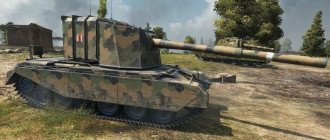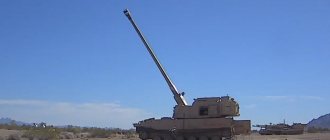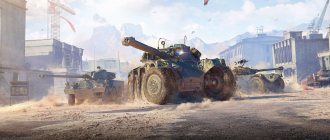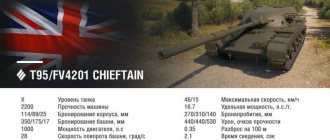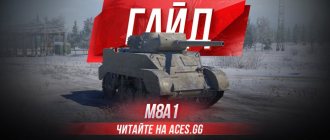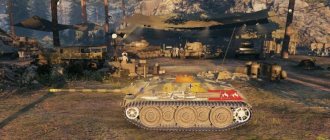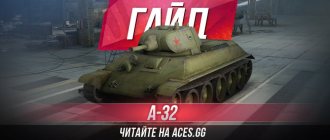The British are the pioneers in world tank building, for which we must thank W. Churchill. As you know, the First World War quickly escalated into a trench war. To give it at least some dynamics, in October 1914, Secretary of the Defense Committee Colonel E. Swinton made a proposal to create an armored vehicle on a tracked vehicle that could break through defense lines: cross trenches, trenches and wire fences. The Minister of War did not react to the idea, but the First Lord of the Admiralty (Naval Minister) W. Churchill supported the idea, and after some time the Land Ships Committee was created under the Navy Department.
British tanks of the First World War
There were several tank qualifications in the British forces at the time.
The first is weight: up to 10 tons - light, from 10-20 tons medium and about 30 tons heavy. As is known, preference was given mainly to heavy tanks.
The second qualification concerns weapons: tanks with exclusively machine gun armament were called “females”, those with cannons - “males”. After the first oncoming battles with German tanks, which showed the inadequacy of machine-gun models, a combined type with cannons and machine guns appeared, such tanks were called “hermaphrodites”.
As for the doctrine of using tanks in battle, the opinions of the military were divided into two halves. One half wanted to create and use purely “infantry” tanks, the other “cruising” ones.
Infantry type - used for direct support of infantry, had low mobility and was well armored.
The cruising type is a kind of “armored cavalry”, quite fast, and in comparison with infantry, lightly armored. On their shoulders, together with the cavalry, fell the tasks of quickly breaking through the defense, enveloping and raiding the enemy’s rear. The armament of both types was the same, mainly machine guns.
The British retained this concept of using tanks until the beginning of World War II. If you delve deeper into it, you will see that tanks play a supporting role, the main tasks are performed by cavalry and infantry.
Before the end of the First World War in England, after the heavy MK-I, its modifications were produced up to Mk VI and Mk IX and medium ones: Mk A (unofficially “Whippet”), Mk B and Mk C.
Of course, the quality of the first production tanks was quite low.
There are many interesting facts in the diaries of German soldiers and in official reports. For example, due to gas pollution inside the tanks, there were frequent cases of suffocation of the entire crew. Due to the primitiveness of the suspension, the tanks created such a roar that, in order to disguise the movement of tank units, the British accompanied them with artillery cannonade. Due to the narrow tracks, there were cases when tanks became muddy in the ground right in front of the enemy trenches.
One case speaks about security.
In November 1917, in the battles near Cambrai, on the outskirts of the village of Flesquières, one German officer was left with a cannon abandoned by servants; he, slowly, loading himself, pointing and shooting, destroyed 16 British tanks in order.
It seemed that even then it was necessary to think about strengthening the armor, but not one of the tank manufacturers did this until the conflict in Spain.
Be that as it may, the British, with their tanks, added a new level to the conduct of wars; they transferred them to other speeds. Before the end of the war, they managed to be the first in the world to create amphibious tanks and communication tanks.
VII level
Challenger
- DPM - 2246 hp
- Armor penetration - 220 mm.
- Mixing time - 1.92 s.
- Spread - 0.34 m.
- Maximum speed – 52 km/h.
- Camouflage values - 13.38 / 3.01
Conclusion
- A real Tier VII contender. Great for everyone. Here's our guy Challenger.
- Its gun is typically British, with low alpha damage, long aiming time, suppression, accuracy and penetration. He is successful over both short and long distances. Hills will be your friend with this gun. With this weapon he can fight even with level IX.
- It has no armor, especially with the second turret. (Its thickest armor at the rear of the turret is 200mm). You must hide and use good camouflage options. You can quickly change position if necessary. Does the enemy have a great position? No problem! You can use your mobility to flank attacks. The cost of turning is also high.
- But don't turn too much; the latest 32-pounder can only turn 60 degrees. Do not forget.
Tanks between the great wars
England ended the First World War as a leader in tank production, but very soon all the advantages disappeared.
Firstly, due to the fact that they strictly separated the types of tanks and their use: the British continued to build “infantry” and “cruising” types.
Secondly, due to its geographical location, the command gave priority to the development of the fleet over the land army.
The implementation of one of the tactical ideas of J. Fuller, by the way, almost all countries “fell ill” with it, was the creation of mechanized infantry. The Carden-Lloyd MkVI wedge was ideal for these purposes. In its entirety, according to the strategist’s plan, it was supposed to play the role of an “armored skirmisher.” Despite the fact that the wedge did not receive recognition in its homeland, although reconnaissance tanks and tractors were built on its basis, it was purchased by 16 countries, and Poland, Italy, France, Czechoslovakia and Japan acquired licenses for their production. In the USSR it was produced as the T-27.
Another tank that was not appreciated by its compatriots was the Vickers 6 tons. In the world tank building it played no less a role than the Renault FT in its time. Light and cheap to manufacture, with a machine gun in one turret and a cannon in the other, it was the embodiment of the idea of World War I tanks: machine gun tanks act against manpower, while cannon tanks support them.
Among the tanks put into service at the end of the 1920s and the beginning of the 1930s were:
- medium Mk I "Vickers-12 tons",
- heavy A1E1 “Independent”,
- various modifications of the Vickers-Carden-Loyd Mk VII and Mk VIII.
In anticipation of a big war, the headquarters of the ground forces, back in the late 20s, insisted on the creation and production of infantry tanks, but due to the economic crisis in the country, funding was not allocated. After the conflict in Spain and Italy’s attack on Ethiopia, the British leadership, anticipating the approach of a “big conflict” and understanding the inconsistencies of the time of the equipment they had previously created, urgently financed the creation and production of new tanks.
Appear: “cruising Mk I (A9), Mk II (A10), Mk III, Mk IV and Mk VI “Crusader” (A15).
Mk IV and Mk VI were implemented on the famous wheeled-tracked base of the American inventor Christie, but using one propulsion unit.
In 1939, production of the first (!) tank with anti-ballistic armor began - the infantry A11 Mk I "Matilda", later another tank would be named by this name. Its speed of 13 km/h and machine gun armament made it a laughingstock. In general, during the period between the “great” wars, British designers created more than 50 real models of tanks, 10 of which were put into service.
Level III
Valentina
- DPM - 1009
- Mixing time - 1.7 s.
- Spread - 0.38 m.
- Maximum speed – 24 km/h.
- The thickest armor is 65 mm.
* 2-pounder gun selected.
Conclusion
- Typical British tank.
- Good armor thickness with poor slope. Not very effective, but still very durable. Even the rear armor is the same thickness as the front. He can also face flanking situations.
- Due to its thick armor and weak engine, this tank is very slow. Although it is a light tank, the maximum speed is 24 km/h. Somehow its turning is not as bad as its mobility.
- His gun is also very British. Very poor alpha damage, average penetration and DPM. The spread is decent, the mixing time is excellent.
- The atypical thing is its camouflage characteristics. The price tags are very good, better than some tank destroyers. Especially useful with a fast-firing gun and good armor.
British tanks of World War II
At the start of World War II, England's armored vehicles were noticeably outdated. Neither in quality nor in quantity could it compare with the equipment of the USSR and Germany. The total number of all tanks in the British army was about 1000, most of them light. The lion's share of which was lost in the battles for France.
During the war, English manufacturers were unable to satisfy the demands of the army; during the period 1939-1945, only 25 thousand units of armored vehicles were produced, the same number came from the USA and Canada.
All the new technology was rather mediocre, it was one step behind the German and Russian ones.
Mainly cruiser and infantry tanks were produced, and light airborne tanks were produced in small quantities.
The cruising Covenanter was the first to be produced, then the Sentor, Cromwell, Kevelier, and Challenger. The last cruising tank was the Comet; the British did not further divide them into types. The infantry ones produced the Matilda, Valentine and Churchill. The last one was Centurion, after the war it became the main one. Self-propelled guns were almost never built in England.
A13 Mk. II Cr. Tank Mk. IV (3rd level)
A slightly improved model of the previous tank. It has additional shielded armor, the thickness of which, however, is still small for battles at this level. Engine speed and power remained the same as on the A13 Mk. I Cr. Tank Mk. III. But the QF 40 mm Mk. VI deserves special mention.
Although the tank's drum only holds two rounds, one salvo of the A13 Mk. II Cr. Tank Mk. IV fires two shots with a tiny time interval. As a result, it turns out that we actually have four cartridges in the drum, but we cannot control the second and fourth shots, because they are automatic. But all this, of course, is relevant for a tank with a “top” gun. Having learned to use your rate of fire wisely, you will be able to disassemble the enemy even at a higher level, since the average damage and armor penetration of our gun allow you to do this.
Modern British tanks
Analyzing the equipment of the war period, the British saw that in none of their parameters their vehicles could not compare with the leaders in this industry, and first of all, in terms of armament and armor. The decision was made to replace all types with one, what would later be called the “main combat” type. Using the then British terminology, the choice fell on the Centurion medium gun tank. Having undergone a number of modifications (17), it remained in service for more than 40 years.
After Churchill’s famous post-war phrase, tanks all over the world joined the arms race, and their development, in general, is similar to each other. To counter our IP, Conqueror is being created. After the concept of the main battle tank was accepted in the world, the Chieftain was released. The third generation tank in England is the Challenger.
In addition to the main ones, after a long break, light Scorpion tanks began to be produced in 1972.
In addition, Britain designs and produces a number of armored vehicles exclusively for export. Among them: Vickersey Mk1 “Vijayanta”, Mk2, Mk3, Mk4 “Valiant”, Mk5, Mk7; based on the "Chieftain" Shir-1 "Khalid" and Shir-2 "Chieftain-900".
More material on the topic
- M4 Sherman
- New deadly tank T90MS
IX level
Centurion Mk. 7/1
- DPM - 2179 hp
- Armor penetration - 268 mm.
- Mixing time - 2.21 s.
- Spread - 0.31 sec.
- Maximum speed - 50 km/h.
- The turret armor is 254 mm.
Conclusion
- It was too difficult to choose between the Conqueror and the Centurion Mk 7/1. After careful study, the Tier IX hero Centurion Mk. 7/1
- Firstly, its 105mm gun is an excellent all-rounder. It has a BOD reserve and a high projectile speed. Taking into account the large spread, reduction and average convergence time. This is a great gun for any range and any purpose.
- Its top speed isn't the best, but it's still useful for capturing positions and flanking attacks. Excellent acceleration and cornering performance makes everything better.
- It has excellent turret armor with good depression ratings. This means it is a real beast in closed-case situations. Camouflage will not be useful; after hitting targets, do not forget to retreat.
- A little about something else - hull armor. This is completely useless and increases the silhouette of the tank. Allows you to easily hit targets at long distances.
A short introduction
Attempts by British designers to go their own way led to the fact that British tanks were no longer considered a formidable fighting force on the battlefield. Despite the rather long model range, British vehicles created during the Second World War could hardly be considered real competitors of the German PzKpfw VI tanks, known as the Tiger tank, or the PzKpfw V - “Panther” tank. British tanks also lost to Allied vehicles, the American M4 Sherman tank and the legendary Soviet T-34. Today the British can be proud of their Challenger 2 tank, which is, if not the most powerful armored fighting vehicle, then certainly the most modern. Previously, the situation looked dire. The British "Cromwells", "Churchills", "Matildas" and "Valentines" could not boast of large series and timidly trailed behind their more modern and technically advanced armored brothers.
The main drawback that has plagued British armored vehicles for a long time is the high cost of products. The British tried to do everything thoroughly and incorporated a large number of components and assemblies into the design of the tank. The production of such armored monsters turned out to be very expensive, not to mention the difficulties of servicing the vehicles in the field.
The British have a tendency to build expensive military vehicles even today. Their second Challenger is today considered the most expensive combat vehicle. The cost of one unit is almost 8.5 million dollars. For comparison, the Russian main tank T-90 “Vladimir” costs the state treasury half as much (4.8 million US dollars).
The desire to create a more technically advanced vehicle often led to the fact that British tanks turned out to be too difficult to maintain. In addition, the international arms market was of little interest in expensive vehicles with a complex design and difficult to operate. This led to the fact that British tank building was mothballed for many years in its own developments, losing the threads of progress in this industry.
